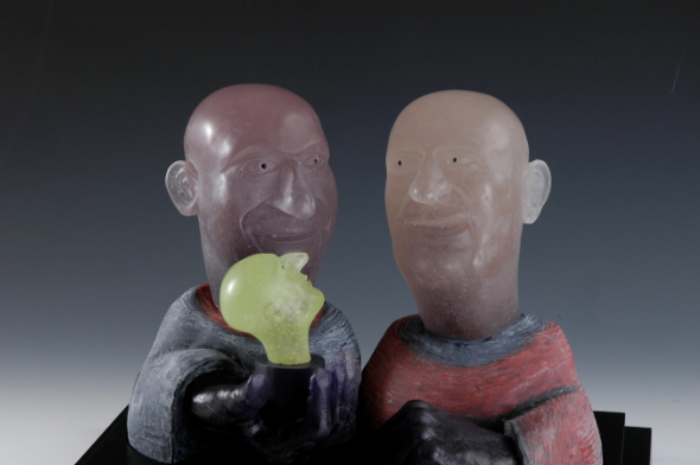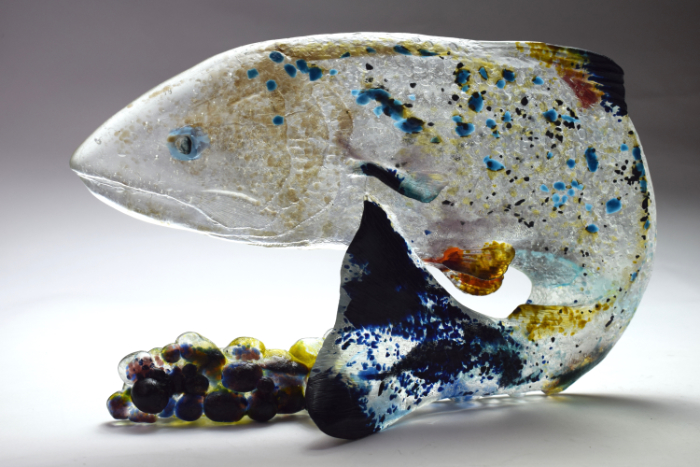
Glass artist interview with Gail Turbutt
Six years of development have resulted in Gail Turbutt’s unique kiln sandcasting method of creating glass sculptures, in a practice that aims to be as environmentally responsible as possible. Linda Banks finds out more.
What led you to start working with glass?
A handy suggestion from my art college tutor brought glass as a medium into my world. I had no idea at that point of the possibilities that glass had to offer an artist. I am very grateful to Hereford Art College for the introduction to this mercurial material. I can’t imagine expressing my artwork in any other medium.
Having gained a BA(hons) in 3-Dimensional Design in Glass at Wolverhampton University, I embarked on a number of ventures, all looking to advance mould making and glass casting using machine processes in Wolverhampton and Oxfordshire.
I joined forces with Amanda Brisbane at her glass studio in Ludlow between 2003 and 2017. In this partnership my love of problem solving was used to the full, and our process of sandcasting glass was pushed to its very limits, with Amanda Brisbane Glass Ltd duly becoming a recognised name worldwide.
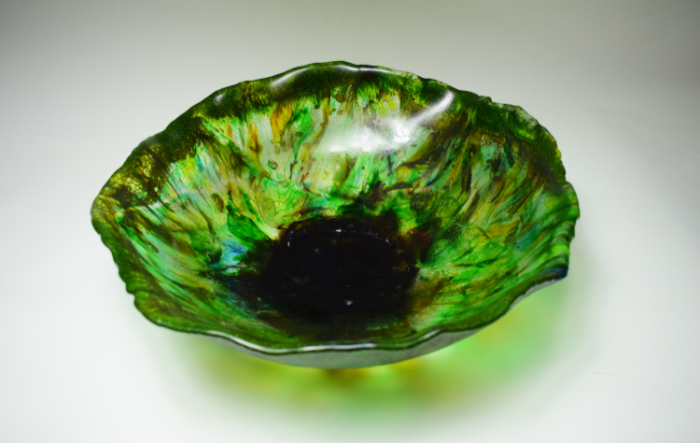
What glass techniques have you used, and which do you prefer?
I have worked with machine processed glass, blown glass, architectural glass, kiln-formed glass and sandcast glass. It’s hard to choose one and I am still exploring how to combine skills garnered through all of these processes to create my sculptures and push my technique forward.
I love the immediacy provided by sandcasting molten glass and being hands-on with the manipulation of the sheet material as it cools. I miss this interaction, but I have not ruled out ways of introducing that into my work in the future. Glass allows you so many ways to play; nothing seems to be off the table.
What message(s) do you want to convey through your art?
Most of the time, it’s not about a message for me. I like to take my observations of nature and the world around me to create sculptures that explore form and colour, and that is as complex as I need it to be. I am fascinated by the structure and beauty of nature and wildlife, and explore this most fully when I try to capture nature’s skill in my sculptures. I observe more intently as I try to recreate how leaves join stems, how scales change across a body, or how birds’ wings behave in flight. I love being able to translate this exploration of form into a sculpture, exploiting the unique, fundamental qualities of glass in the process. Utilising both textured and flat surfaces, and their interaction with natural light, I am able to create sculptures that almost come to life. I embrace that wonderful inner world unique to the properties of glass.
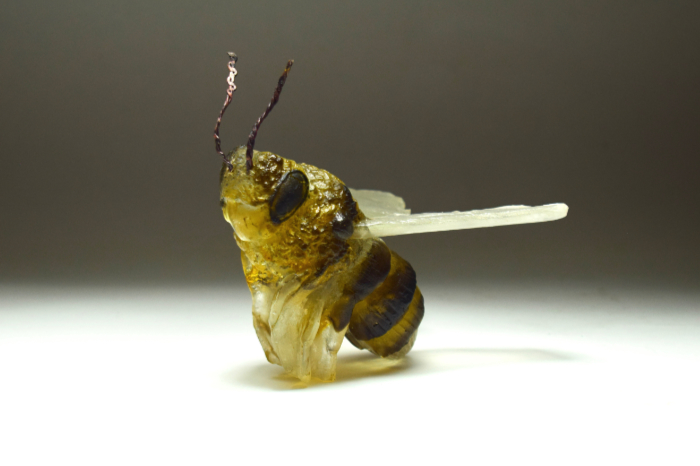
Occasionally, there is a deeper message that I want to investigate and the work is my exploration of that theme. For example, currently I am working on a collection that conveys the effect of depression in the eyes of the sufferer, having witnessed a flatness appear in the eyes of my partner going through depression. This collection may bring some awareness of the wonder of eyes and how they can be a ‘portal to the soul’, expressing someone’s innermost feelings to the world if the viewer really looks. Hopefully this work will promote discussions around this illness. I am undertaking some wonderful explorations of new colouring techniques, and I am looking forward to seeing how I can bring both light and dark to the collection.
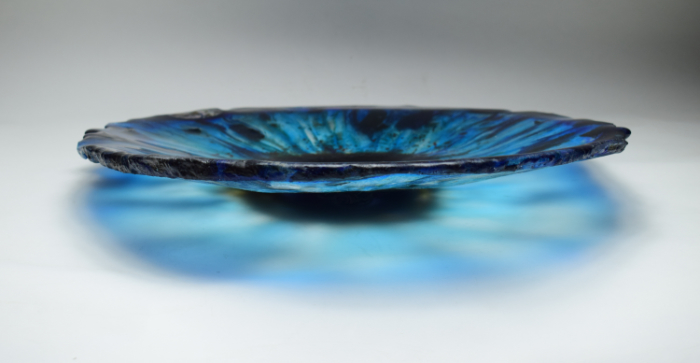
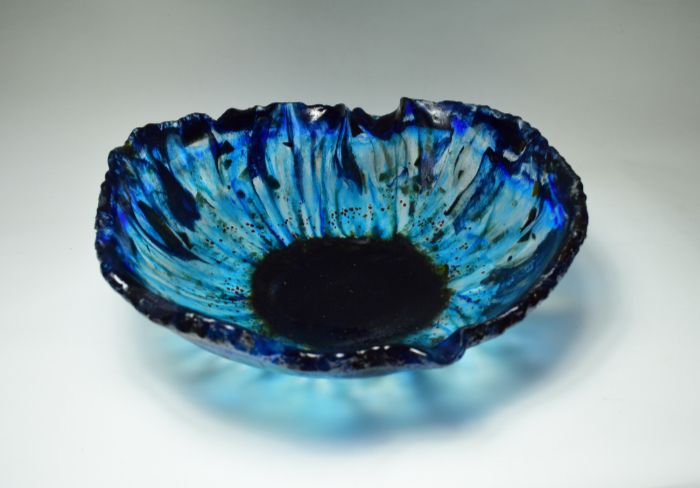
interaction between the two forms.
What is your favourite tool or piece of equipment and why?
I think it is my own mould mix of pottery plaster/diatomaceous earth/water/ludo (ground up refractory from a mould that has been fired), as it gives me a finish that needs no polishing, and is reusable, either as ludo or a sieved bed of infinitely reusable media in which to mark make and kiln sandcast. It is tricky to handle wet, but I understand it. I love the qualities and challenging limitations it brings to my work – and I especially like the reduced impact on the environment.
Do you have a favourite piece or collection you have made? Why is it your favourite?
My Lotus leaf collection is my favourite. It is organic in form – both in terms of the creation of the loose bed of media with the open flat form enabling me to explore colouring behaviours as the glass melts and fuses, moving into the voids, and the slumping in and then over formers that allows me to harness large, undulating forms in sometimes as few as two firings. This makes every piece unique, which is wonderful and allows the glass to be as it should be – the other member of the team – creating serendipitous effects that you hope may occur but don’t have complete control over.
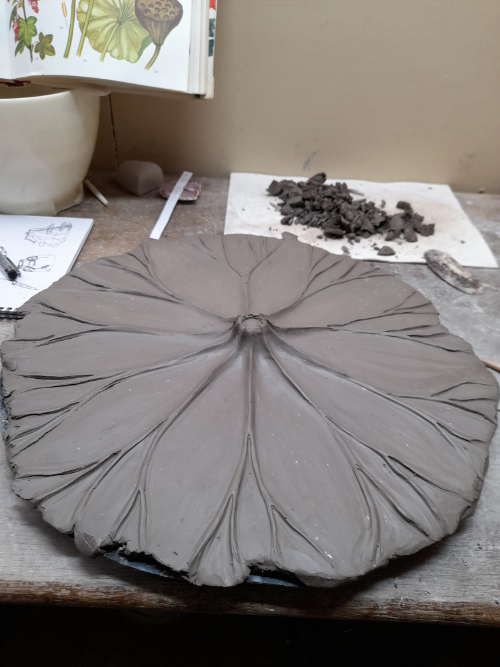
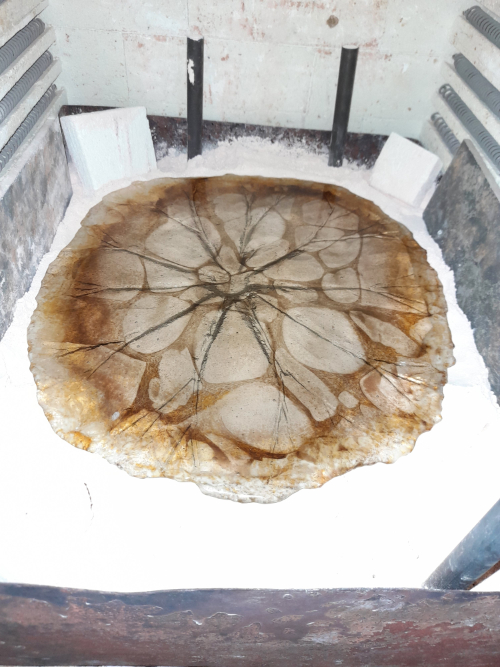
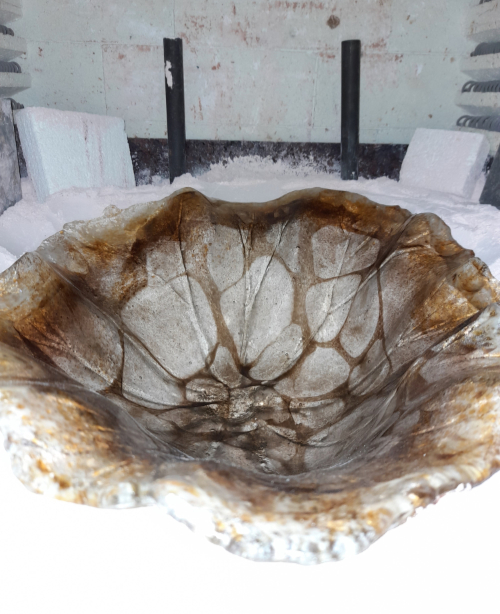
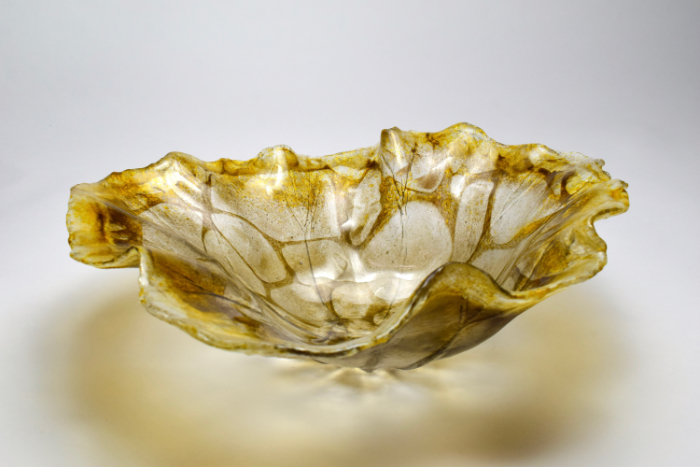
Where do you show and sell your work?
Mostly I undertake private commissions, but I have work at Majlis Gallery, Dubai, as well as Stourbridge Glass Museum, in the UK. I am working on expanding this list; it has taken me six years to develop the process and rediscover my artistic style, so now my focus is to get it known more widely.
Where is your creative practice heading next?
Currently I am working with one pottery kiln dating from the 1980s, but the goal is to increase capacity in due course. However, that will only happen when the business has solar or wind generation to create the power needed to run the existing, and any future, kilns.
Another long-term consideration bubbling in the background, when solar is in the mix, is to look at using recycling waste glass. However, as we all know, because glass is a fussy beast, this requires a lot more science than I have at my disposal now. It also requires a lot more heat to make it behave in the molten fashion I require, which negates any environmental benefits unless a studio is off-grid.
There is a lot to be explored, but, as a first foot on the ladder of environmentally conscious creation, I am happy with the starting point, and looking forward to exploring its wonderful effects and pushing it to the limit.
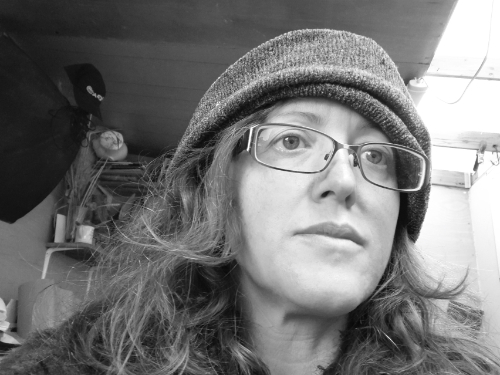
Find out more about Gail Turbutt and her work via her website and follow her on Instagram.
Main feature image: ‘Turn of the Tide’. This open box cast salmon was sculpted in clay and then a master was made in Gelflex hot melt reusable vinyl. All images by the artist.
